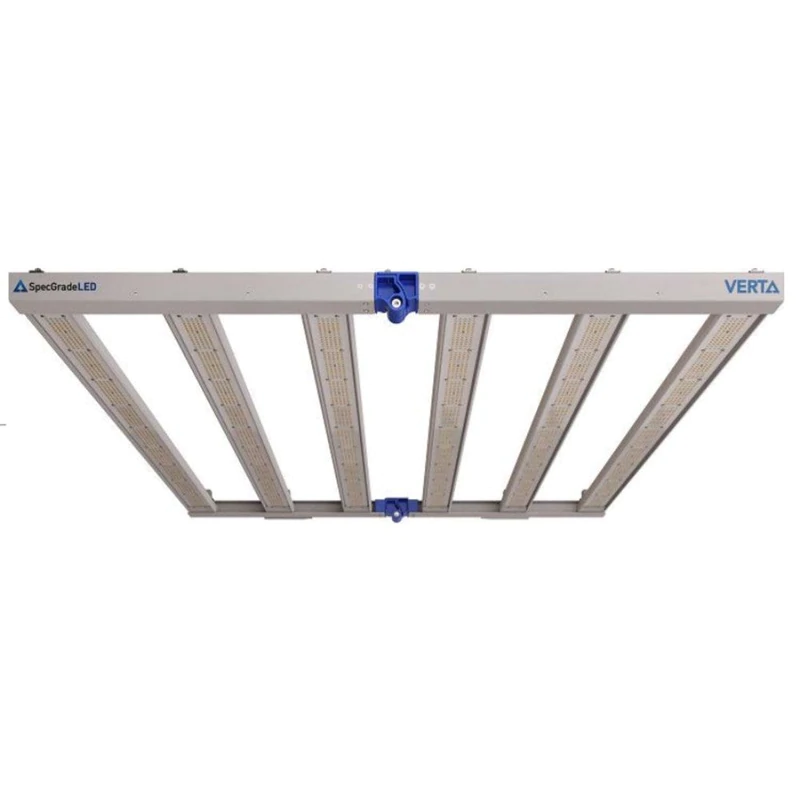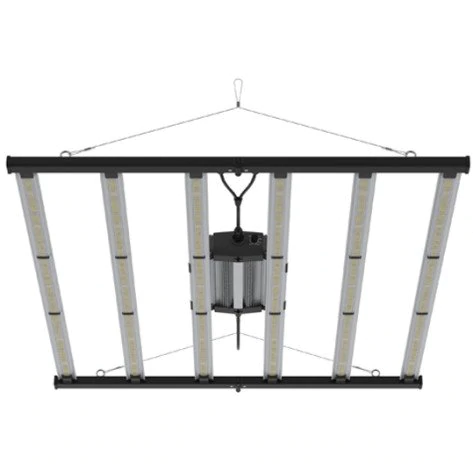- Home
- SHOP ECO FARM
-
TOP BRANDS
-
Grow Lights Brands
- Adjust-A-Wing
- Apollo Horticulture
- Bestva
- Black Dog LED
- California Lightworks
- ChilLED Grow Light
- Eco Farm
- HLG - Horticulture Lighting Group
- Kingled
- Kind LED
- Mars Hydro
- Morsen
- Neilo
- NextLight
- Phlizon
- PlatinumLed
- Roleadro
- Optic LED Grow Lights
- ViparSpectra
- Vivosun
- EYE Hortilux
- IPOWER
- NanoLux
- Phantom grow light
- Gavita grow lights
- Grower's Choice
- Lumatek
- Maxibright
- Yearld Pro
- ThinkGrow
- Crecer Lighting
- Green Sunshine Electric Sky
- fohse aries
- loriflux
- luxx
- fluence
- iluminar
- Lex
- LTC
- Rayonled
- FGI
- PHOTONTEK
- Grow Tents & Kits Brands
- Extraction & Harvest Brands
- Climate Control & Hydroponic Brands
-
Grow Lights Brands
- COMPANY INFO
- COOPERATE WITH US
- Blog
- Sign in
- Home
-
SHOP ECO FARM
- ECO Farm Grow Lights
- ECO Farm LED Grow Lights
- ECO Farm Quantum Board
- ECO Farm Samsung LED Grow Lights
- ECO Farm COB Grow Lights
- ECO Farm Commercial Lights
- ECO Farm Supplemental Grow Light
- ECO Farm Fluorescent grow lights
- ECO Farm HPS & MH Grow Lights
- ECO Farm CMH Grow Lights
- ECO Farm HID/CMH Bulbs & Ballasts
- ECO Farm Grow Tents & Kits
- ECO Farm 2x2ft Grow Kits
- ECO Farm 3x3ft Grow Kits
- ECO Farm 3.3x3.3ft Grow Kits
- ECO Farm 4x4ft Grow Kits
- ECO Farm 5x5ft Grow Kits
- ECO Farm Grow Tent - Standard Style
- ECO Farm Grow Tent - Extension & Roof & Lodge Style
- ECO Farm Extraction & Harvest
- ECO Farm Rosin Press Machine
- ECO Farm Dry & Wet Trimmers
- ECO Farm Oil Accessories
- ECO Farm Medicinal Plants Grinder
- ECO Farm Medicinal Plants Containers
- ECO Farm Medicinal Plants Dryer
- ECO Farm Refrigeration Dryer
- ECO Farm Climate Control & Other Accessories
- ECO Farm Inline Duct Fans
- ECO Farm Oscillating Fans
- ECO Farm Exhaust Fans
- ECO Farm Air Filter
- ECO Farm Duct Muffler
- ECO Farm Ventilation Kits
- ECO Farm Plant Humidifiers
- ECO Farm Plant Dehumidifiers
- ECO Farm Hydroponic Accessories
- ECO Farm Other Accessories
- ECO Farm Hydroponics Microscopes
-
TOP BRANDS
- Grow Lights Brands
- Adjust-A-Wing
- Apollo Horticulture
- Bestva
- Black Dog LED
- California Lightworks
- ChilLED Grow Light
- Eco Farm
- HLG - Horticulture Lighting Group
- Kingled
- Kind LED
- Mars Hydro
- Morsen
- Neilo
- NextLight
- Phlizon
- PlatinumLed
- Roleadro
- Optic LED Grow Lights
- ViparSpectra
- Vivosun
- EYE Hortilux
- IPOWER
- NanoLux
- Phantom grow light
- Gavita grow lights
- Grower's Choice
- Lumatek
- Maxibright
- Yearld Pro
- ThinkGrow
- Crecer Lighting
- Green Sunshine Electric Sky
- fohse aries
- loriflux
- luxx
- fluence
- iluminar
- Lex
- LTC
- Rayonled
- FGI
- PHOTONTEK
- Grow Tents & Kits Brands
- Apollo Horticulture
- Black Box
- CoolGrows
- Eco Farm
- GrowLab
- Gorilla Grow Tents
- Mars Hydro
- Quictent
- Secret Jardin
- Unit Farm
- TopoGrow
- VIVOSUN
- Topolite
-
COMPANY INFO
-
COOPERATE WITH US
- Blog
SpecGrade LED Verta-6 Eco 640W LED Grow Light VS Flexstar Foldable 645W Dimmable Led Grow Light
April 11, 2022
If you have indoor plants, you should pay attention to how much light they’re getting. In this article, we’ll look into various grow lights for houseplants to help your indoor plants grow fast and healthily. We also provide a buyer’s guide to help you make the right considerations when purchasing in terms of brightness, pricing, and more, so read on!
What Color of Light?
You may notice that many grow lights have both red and blue bulbs. During our previous discussion on LED grow lights, you learned that plants only really care about these two types of light. But what’s the difference?
The blue spectrum of your grow light to aid in photosynthesis, but don’t contribute as much to your plant’s growth as the red spectrum. Researchers at Michigan State University have discovered that blue light tends to suppress growth and plants grown solely in blue light tend to be shorter with thicker and darker colored leaves.
However, blue light is beneficial in regulating and encouraging flower growth in some species of plants, especially at higher intensities.
Red light is responsible for extension growth and those same researchers at MSU found that plants grown only under red light tend to be tall, thin, and elongated. The red light also had an effect on the flowering of the plants involved in the study.
Researchers concluded that the combination of red and blue lights was the most effective in terms of both growth and flowering. So that’s why most of the grow lights you see on the market today have both.
How Many Plants?
The number of plants you can keep under your grow lights will depend on the type of light you use and how many plants you own. Obviously, if you only have a few succulents and cacti, covering them all with a grow light will be relatively simple.
If you only have a few plants, you might want to consider clip-on or single bulb grow lights. This will allow your grow light to concentrate its efforts on a small space.
However, if you have a large collection of plants, or have particularly large succulents or cacti, you may need larger or multiple grow lights.
Hanging overhead lights are ideal for maximum coverage. As mentioned earlier, tube lights will cover the most plants.
If your succulent collection is spread throughout your home, rather than just in a single location, you may need to consider investing in multiple grow lights.
SpecGrade LED Verta-6 Eco 640W LED Grow Light

Features:
SpecGrade’s new professional-grade Verta-6 Eco combines performance, superior engineering, and price. Their fine-tuned mature A1 spectrum will improve tricolor and flavor while reducing operating costs and shortening growth cycles. Verta-6 Eco is sure to be the new choice for professionals to get the highest return on investment. Standard 0–10V dimming works with Grow-Connect ready (daisy-chain) harnesses, making the Verta-6 Eco the perfect choice for flowering and vegetable applications. It is designed for maximum PPFD while using much less power than conventional light sources. Fully modular design allows for best-in-class maintenance and adaptability.
Flexstar Foldable 645W Dimmable Led Grow Light

Features:
The Flexstar LED Grow Light is an electronic horticultural LED fixture with 6 LED light bars to be used in greenhouses or in climate-controlled rooms. Powered by Samsung & OSRAM. More than 50% higher in PPFD compared with HID lamps. Energy-saving with 37% lower power consumption than HID lamps. Slim design that is foldable up to 180 degrees, making it small, compact, and easy to install. The ballast includes specialized foldable mounting brackets that attach to the LED tubes. This LED grow light product will deliver everything plants need from natural sunlight to transform your seeds and saplings into high-yielding plants. There’s no assembly required either, right out of the box, the LED grow light is ready to use.
Buyer’s Guide to LED Grow Lights: How to Choose the Best Lights
There are a number of different factors that you need to keep in mind when you are looking forward to buying an LED grow light for your plant. First off, you need to know if the light you are buying will be providing you with sufficient coverage as to cover the grow tent properly. In addition to that, you need to know exactly how much area does it cover during the vegetative phase and how much does it cover during the flowering phase when the light is lowered. Always make sure the flowering area is sufficient to cover your tent before you finalize on the light.
Post the coverage, you need to check for power consumption which is another important factor for growers. The wattage written on the product’s name is usually the output that you get and not the power draw (which is generally lesser). Hence, always check the product details for the exact power draw, which will tell you about the amount of power that is being drawn from the wall socket. In addition to that, do check the durability of the product — as well as the total lifespan. Most good LED grow lights will last anywhere 75,000 to 100,000 hours!
Lastly, also check if the company that is making it has service centers in your country. Most major players are based in China (or other nearby Asian regions) and have warehouses and service centers in US, UK, Australia, EU, etc. Do check the warranty period that they are offering (a minimum of three years is recommended) as well. Lastly, the price and your budget should also be kept in mind before you make a final purchase.
Conclusion
Plant grow lights help indoor plants sustain their growth even without direct sunlight, aiding them in various stages of development, such as germination and flowering. Buying the right grow light for your houseplants is crucial for ensuring they continue to grow and make your house a more comfortable place to live in. Make sure to buy one that provides the right type of light for them and offers the flexibility you need in terms of installation, illumination, and heat management.
Also in Indoor Grow LED Grow Light
HLG Greenhouse Pro HE HV 630W LED Grow Light VS Geeklight grow light 480W hydroponic led grow light
October 20, 2023
